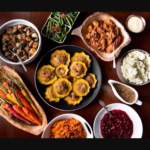Nutrition, we’ve learned (and proven in laboratory settings) can and should come entirely from plants. Carnivores and omnivores didn’t evolve because they needed to be that way, but due to times of hardship and desperation. It is a myth that anything needs blood or meat to survive (though some things are, of course, temporarily addicted).
–
Table of Contents:
- Introduction
- Vocabulary
- Progression
- All Recommended Nutrients for a Human
- Minerals
- Vitamins
- Every Plant-based Food Source of Meat-based Nutrients
- Transitioning
- To Lose Weight
- To Gain Weight
- To Tone
- To Build (Muscle) Mass
- Additional Notes
- Images
–
Introduction:
This course teaches which nutrients actually exist, which species and races need which of those nutrients, where those nutrients exist in nature, and different types of diets which will help specific types of individuals get the physique or general health results they desire.
–
Vocabulary:
- calories
- carbohydrate (simple vs. complex)
- cheat-meal/s
- cum-ivore (what nymphs are; their nourishment comes from sexual unions (direct physical contact between themselves and others), predominantly the exchanged fluids from those unions)
- detox
- dietician
- electrodermal screening
- flavor profile
- fruit
- fungus / (edible) mushroom
- gastrointestinal
- gustatory
- herb
- herbivore
- Herxheimer reaction
- mineral
- molecular gastronomy
- neurotransmitter/s
- “nervous eater” / “eating your feelings”
- nut
- olfactory
- omnivore
- Paleo’
- pescatarian
- protein
- sea-greens (seaweed)
- spice
- sugar/s (all the different names/types)
- vegan
- vegetable
- vegetarian
- vitamin
more TBA…
–
Progression:
- Paleo
- Body Proportions
- BFI, BMI
- Caloric Needs
- _TBA
- _
- _
- _
- _
- _
- _
- _
- Exodus
- _
- _
- _
–
All Recommended Nutrients for a Human:
- carbohydrates
- fat
- fiber
- minerals
- protein
- vitamins
- water
reference: list of nutrients a human is said to need
*Bear in mind that not included on that theorized list are elements such as gold; finer more-conductive metals, in certain (digestible / uptake-able) form/s were found to have far better health-stabilizing/-restoring results than consuming ‘baser’ materials such as iron.
…
how this recommendation was unethically modified during the Modern Era (due to lobbying, illegal experiments, etc.)
–
Minerals:
- calcium
- phosphorus
- magnesium
- sodium
- potassium
- chloride
- sulfur
You only need small amounts of these trace minerals:
- iron
- manganese
- copper
- iodine
- zinc
- cobalt
- fluoride
- selenium
Most people get the amount of minerals they need by eating a wide variety of plant-based foods.
–
Vitamins:
A: _ function/s TBA
C: _
D: _
E: _
K: _
and the B vitamins:
- thiamine
- riboflavin
- niacin
- pantothenic acid
- biotin
- B6
- B12
- folate
–
Daily reference intakes for adults are:
- Energy: 8,400kJ/2,000kcal
- Total fat: less than 70g
- Saturates: less than 20g
- Carbohydrate: at least 260g
- Total sugars: 90g
- Protein: 50g
- Salt: less than 6g
(theorized for the average adult human, “give or take”; less for smaller/female, etc.)
–
Every Plant-based Food Source of Meat-based Nutrients:
(In other words: Everything meat-eaters claim can only come from meat, actually only comes from the plants the animals eat.)
protein sources
All fruits and vegetables contain protein, but the amounts are usually small.
- Seitan, Soybeans (such as in Tofu, Tempeh, and Edamame)
- Lentils
- Legumes (Chickpeas (Garbanzo beans) and most other beans (Kidney, Black, Pinto))
- Nutritional Yeast
- Spelt and Teff (ancient grains)
- Hempseed
- Green Peas
- Spirulina
- Amaranth and Quinoa
- Ezekiel Bread and Other Breads Made From Sprouted Grains
- Soy Milk
- Oats and Oatmeal
- Wild Rice
- Chia Seeds
- Nuts, Nut Butters, and Other Seeds
Protein-Rich Fruits and Vegetables
Vegetables with the most protein include broccoli, spinach, asparagus, artichokes, potatoes, sweet potatoes and Brussels sprouts.
…
Testosterone sources:
- Ginger
- Pomegranates
- Fortified plant milks
- Leafy green vegetables
- Extra-virgin olive oil
- Onions
–
Transitioning:
starting with Paleo’, then pescatarian, then vegetarian, and finally vegan
how long it should take; based on many factors, such as age, height, weight, habits, environment, etc.
–
To Lose Weight:
caloric intake is less than burn
safe minimums based on height, body type, race, species, and environmental factors/concerns/demands
safe rate of loss
–
To Gain Weight:
caloric intake exceeds burn
safe maximums based on height, body type, race, species, and environmental factors/concerns/demands
safe rate of gain
–
To Tone:
cardio
safe rate to tone
–
To Build (Muscle) Mass:
high weight, low reps/sets
safe rate to build
–
Additional Notes:
Humans are naturally herbivores; vegans; they lack the saliva composition, sharp canines, and digestive enzymes of carnivores/omnivores.
While different humans do best with amounts and ratios of nutrients matched/proportional to their activities/exertion and genetic digestive predisposition, all the nutrients they need come from natural plant sources; nothing they need comes from animal parts.
Also, while it is theoretically possible to create vitamins via chemical processes in laboratories/factories, supplements have never had as good results as just eating natural whole plant-based (vegan) food; artificial/extracted/synthesized vitamins are not something the body is used to processing, and either an overdose or overload (unable to digest/use all that was swallowed/ingested) is possible –and much more likely when taking supplements, as opposed to just eating natural food with the natural amount of vitamins and other nutrients in it.
…
2024 May: Article Regarding the Paleolithic-era Diet Theory
–
–


